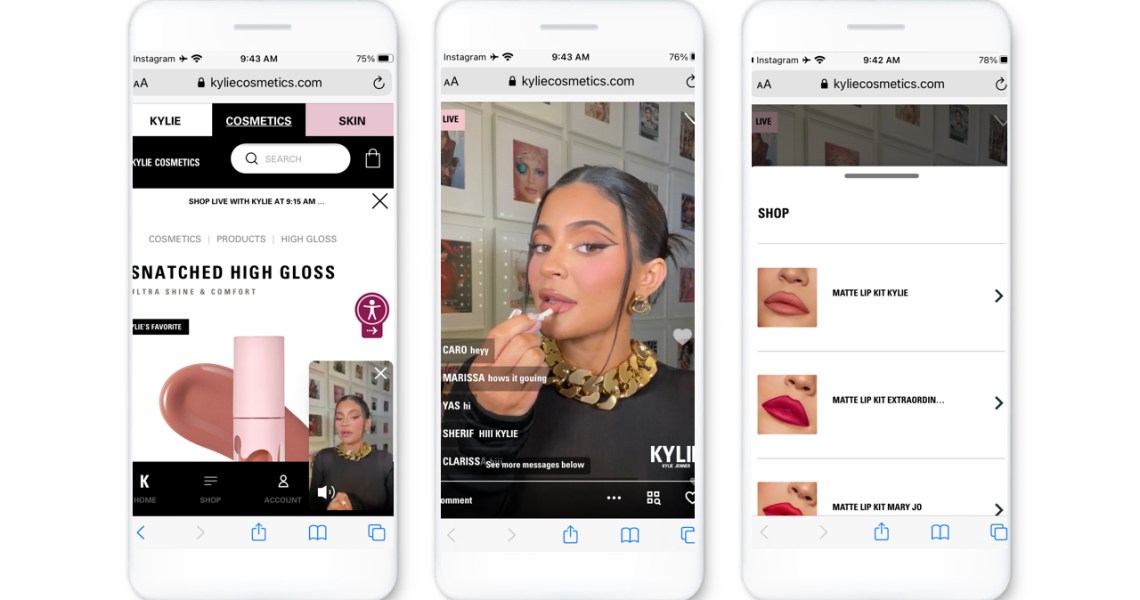In this edition, we highlight our CMO Strategies series. This series analyzes strategies and challenges across leading marketing channels — social media, retail media, display advertising and ad-supported streaming video — to identify key trends and best practices.
Interested in sharing your perspectives on the future of fashion, luxury and beauty?
Apply to join the Glossy research panel.
CMO Strategies: A playbook for marketing channels from social media to streaming
To map out marketers’ current digital playbooks, Glossy+ Research sent out three surveys asking 635 respondents about past and upcoming investments, marketing channel tactics and preferences, and business challenges.
Here are highlights from and links to each in-depth, channel-specific report in the series:
Meta-owned platforms Instagram (No. 1) and Facebook (No. 2) are the predominant players in social media. Newer entrant, TikTok came in third place among social media platforms. Despite TikTok’s higher placement in the ranking, the Chinese ByteDance-owned platform still faces uncertainty with ongoing U.S. congressional hearings about a possible ban and potential regulations on its use in the country. As TikTok continues to evolve and regulations take shape, marketers will have to stay flexible with their plans for the platform and measure brand risk accordingly.
“We added newer platforms. I wouldn’t say we’re moving away [from Meta] because we found our consumers are still on all platforms. And we don’t want to miss an opportunity, so we’ve changed spending.” — Angela Zepeda, CMO at Hyundai Motor America
Read the full CMO Strategies report on social media usage and budgets
Amazon is the clear main character in the retail media story, with 76% of respondents to Glossy’s surveys saying they use the platform for selling their companies’ products. As a sales platform, Amazon has an advantage over other retail media networks due to the sheer volume of consumer data it collects. Amazon is able to collect data from a wide range of demographic groups with varied audience interests. That means Amazon can offer brands access to more consumers, and their data, than other retail media networks (RMN) — putting it in the No. 1 position as a retail media partner in terms of scale.
“There are so many people going to [retailer sites] that just general awareness plays will grow. We do a lot with Amazon now with CTV and OTT because they’re one of the main players.” — Casey Terrell, CMO at Krystal Restaurants
Read the full CMO Strategies report on retail media
Marketers consider a variety of success metrics when measuring how well site and email newsletter display ads have performed, with clickthrough rates and impressions being fairly consistent key indicators across most ad tactics. For impression-based measurement, marketers’ main goal is to place ads in strategic spots where brands’ consumers do not necessarily exist yet — but where marketers know their interests align with brands — in order to build up brand recognition.
“It’s also important to be aware of the goal of the banner. Is the goal awareness, or is it click to buy? That doesn’t always come through in the creative. So, if it’s click to buy, stop being cute and just put [for example] a picture of the food and a price point and [wording to the effect of] ‘right-click here to navigate now.’”” — Cheryl Gresham, CMO at Verizon Value (formerly CMO at Verizon’s Visible)
Read the full CMO Strategies report on display ads
Impressions was the top success metric — or of equal or greater importance as watch time/view duration/average — on platforms where marketers devoted a mid-range of their ad placements. Impressions give an assessment of how many — and which types of — people are viewing ads on a particular streaming service, allowing marketers to determine how far a streaming platform, and a campaign, are reaching. Platforms are keen to offer this data as proof of scale as they seek to grow their streaming businesses and to woo advertisers away from traditional TV.
“While viewer engagement is a key metric for advertisers, we also weigh in on various viewer conversion and retention metrics,” “Our goal is to maximize the value exchange between our viewers and advertisers so that it’s a positive and beneficial experience for both.” — Mark Rotblat, chief revenue officer at Tubi
Read the full CMO Strategies report on ad-supported streaming video
See research from all Digiday Media Brands:




